Background
John Horner was born on June 15, 1946, in Shelby, Toole County, Montana, United States. He is the son of John Henry Horner, owner of a sand-and-gravel business, and Miriam Whitted (Stith) Horner. He has a brother.

Missoula, Montana, United States
From 1964 to 1966 and 1968 to 1972 John Robert Horner studied at the University of Montana.
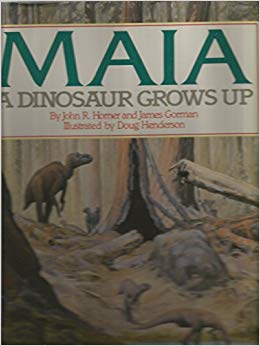
(A baby duckbilled dinosaur living eighty million years ag...)
A baby duckbilled dinosaur living eighty million years ago on the North American continent leaves her mother's nest, forages for food, evades predators, mates, and produces a family of her own.
http://www.amazon.com/gp/product/0894715526/?tag=2022091-20
1985

(A classic paleontology work follows the research of a wor...)
A classic paleontology work follows the research of a world-renowned scientist, chronicling how with a five-hundred-dollar grant and a coffee can of baby dinosaur bones, he revolutionized vertebrate paleontology.
http://www.amazon.com/gp/product/0060973145/?tag=2022091-20
1988
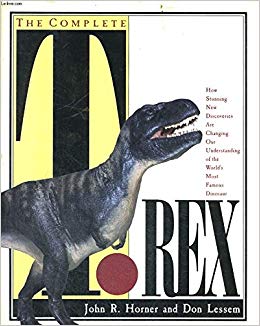
(A look at the Tyrannosaurus Rex discusses the animal's sp...)
A look at the Tyrannosaurus Rex discusses the animal's speed, its warm-bloodedness, its dimensions and anatomy, and its gender differences, offering excavation photos and line drawings.
http://www.amazon.com/gp/product/0671741853/?tag=2022091-20
1993

(In the last couple of decades the study of dinosaur eggs ...)
In the last couple of decades the study of dinosaur eggs and babies has proved to be one of the most exciting and profitable areas of dinosaur research. This is the first book solely devoted to this topic and reviews, in scientific detail, our present state of knowledge about this exciting area of palaeontology. Chapters in the book discuss all aspects of the science including the occurrence of eggs, nests and baby skeletons, descriptive osteology of juvenile skeletons, comparative histology of juvenile bone, analyses of eggs and egg shells, palaeoenvironments of nesting sites, nesting behaviour and developmental growth of baby dinosaurs. The volume will be an invaluable addition to the book collections of vertebrate palaeontologists and their graduate students.
http://www.amazon.com/gp/product/0521567238/?tag=2022091-20
1994
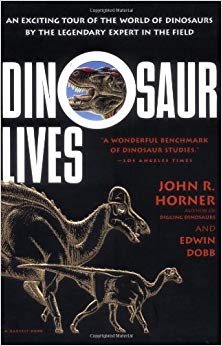
(In this "wonderful benchmark of dinosaur studies" (Los An...)
In this "wonderful benchmark of dinosaur studies" (Los Angeles Times), the paleontologist who advised Steven Spielberg on Jurassic Park gives readers an eye-opening tour of dinosaur discoveries and controversies and a close-up look at his own pioneering fieldwork. Line drawings and black-and-white photographs. In this "wonderful benchmark of dinosaur studies" (Los Angeles Times), the paleontologist who advised Steven Spielberg on Jurassic Park gives readers an eye-opening tour of dinosaur discoveries and controversies and a close-up look at his own pioneering fieldwork. Line drawings and black-and-white photographs.
http://www.amazon.com/gp/product/0156006073/?tag=2022091-20
1997

(This book explores life in the Mesozoic era through text ...)
This book explores life in the Mesozoic era through text and illustrations that speculate on the daily life and behavior of dinosaurs and other creatures who lived in the various habitats of that time period.
http://www.amazon.com/gp/product/0737000899/?tag=2022091-20
2000
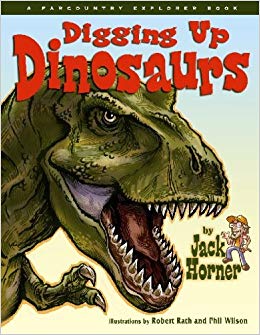
(Horner takes kids along on the dig, explaining step by st...)
Horner takes kids along on the dig, explaining step by step how fossils are formed, the best places to find them, what it takes to get them out of the ground, and what the fossils tell us about the dinosaurs that roamed the Rocky Mountain states and the Dakotas. We even get to look back in time at what the region looked like during the Mesozoic Era and what dinosaurs ruled in what are now Montana, Colorado, Utah, Wyoming, Idaho, North Dakota, and South Dakota.
http://www.amazon.com/gp/product/1560373962/?tag=2022091-20
2007
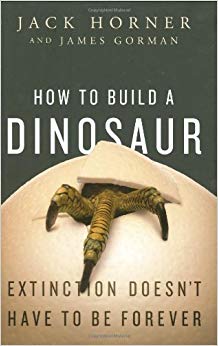
(A scientific advisor for the film, Jurassic Park, evaluat...)
A scientific advisor for the film, Jurassic Park, evaluates the potential for artificially growing a real dinosaur without ancient DNA, in an account that traces his team's paleontology research to reveal the relationships between dinosaurs and birds and how it may be possible to stimulate latent tyrannosaurus rex genes in a chicken.
http://www.amazon.com/gp/product/0525951040/?tag=2022091-20
2009
paleontologist scientist author
John Horner was born on June 15, 1946, in Shelby, Toole County, Montana, United States. He is the son of John Henry Horner, owner of a sand-and-gravel business, and Miriam Whitted (Stith) Horner. He has a brother.
School was difficult for John Robert Horner, who suffered from undiagnosed dyslexia, making reading and writing difficult. At age eight, he found his first dinosaur bone while fossil-hunting with his father. Hunting for dinosaur fossils became a passion for him, and his mother took him on frequent searches. Horner graduated from high school with low marks. His English teacher told him he never wanted to see him again. John never did see him again, but playfully sent him a copy of his first book when it was published.
In 1964 John Robert Horner enrolled to the University of Montana to study geology and zoology. In 1966 Horner was drafted into the Marines Corps, becoming a special forces operative in Vietnam. In 1968 Horner returned to America. and began attended University of Montana until 1972. He did not complete his degree.
John Robert Horner managed a sand-and-gravel business in Shelby, Montana from 1973 to 1975. In the beginning 1975, he worked as a preparator at the Princeton University Museum of Natural History in Princeton, New Jersey. In 1977 Horner was promoted to research assistant there. In 1980 Horner was awarded National Science Foundation funding for a fossil-hunting expedition close to the site where Marion Brandvold found the first tiny Maiasaura bones. The site was near the small town of Choteau, Montana. The expedition brought major discoveries: the first dinosaur egg clutches in North America, the evidence that dinosaur nests were built around one another, meaning some dinosaurs nested in colonies, evidence that "Maiasaura peeblesorum" typically laid about 25 eggs in a nest and the hatchlings were about a foot (30 cm) in length.
In 1982 Horner was appointed an adjunct professor of paleontology at the Montana State University in Bozeman, Montana and curator of paleontology at Museum of the Rockies. He retired from Montana State University on July 1, 2016 although he claims to have been pushed out of the Museum of the Rockies in 2012.
John Robert Horner is best known as a paleontologist for his contribution to the study of dinosaurs. He has discovered a new genus of duckbilled dinosaur, Maiasaura. Horner developed the theory of endothermic metabolism in dinosaur development, of parental nurture of new-born hatchlings,and also that Tyrannosaurus Rex was a scavenger.
(A scientific advisor for the film, Jurassic Park, evaluat...)
2009(In this "wonderful benchmark of dinosaur studies" (Los An...)
1997(Horner takes kids along on the dig, explaining step by st...)
2007(A classic paleontology work follows the research of a wor...)
1988(This book explores life in the Mesozoic era through text ...)
2000(A baby duckbilled dinosaur living eighty million years ag...)
1985(A look at the Tyrannosaurus Rex discusses the animal's sp...)
1993(In the last couple of decades the study of dinosaur eggs ...)
1994John Robert Horner is chiefly interested in the behavior and growth of dinosaurs. He believes mistakes have been made in dinosaur classification. He thinks dinosaur fossils once thought of as separate species are in fact fossils of the same species at different stages of maturity.
His discovery of dinosaur colonies led him to conclude that many species of dinosaur were sociable and lived in herds. This contrasted with the previous view that dinosaurs lived solitary lives.
It is now widely accepted that birds are descended from dinosaurs. Another John Horner's assumption is that a chicken embryo could be grown into an animal that has dinosaur characteristics.
Quotations:
"A dinosaur out of context is like a character without a story. Worse than that, the character suffers from amnesia."
"The chicken is a dinosaur. I mean, it really is. You can't argue with it, because we're the classifiers and we've classified it that way."
"Comparing science and religion isn't like comparing apples and oranges - it's more like apples and sewing machines."
"In the lifetime of one person, we went from figuring out where we came from to figuring out how to get rid of ourselves."
As a youth, John Robert Horner was an introvert. He was extremely shy and deathly afraid of having to speak in front of an audience of any size.
Physical Characteristics: In 1976 John Robert Hornor was diagnosed with dyslexia.
On March 30, 1972 John Horner married Virginia Lee Seacotte. They have a son, Jason James. In 1982 they divorced. On October 3, 1986 he married Joann Katherine Raffelson. In 1994 they divorced. On January 21, 1995 Horner married Celeste Claire Roach. They divorced in 2005. On January 15, 2012 he married Vanessa Weaver, a 19-year-old Montana State University undergraduate paleontology student and volunteer in his lab. They divorced circa 2016.
